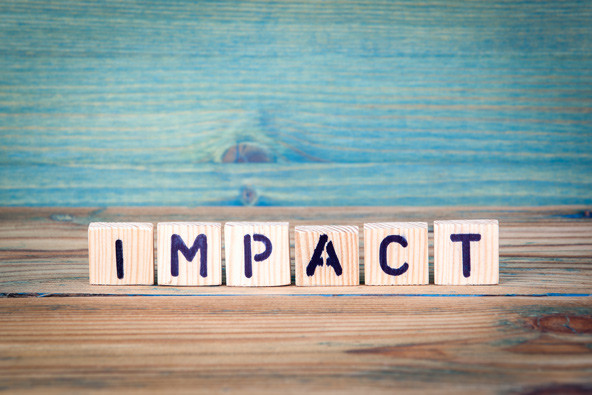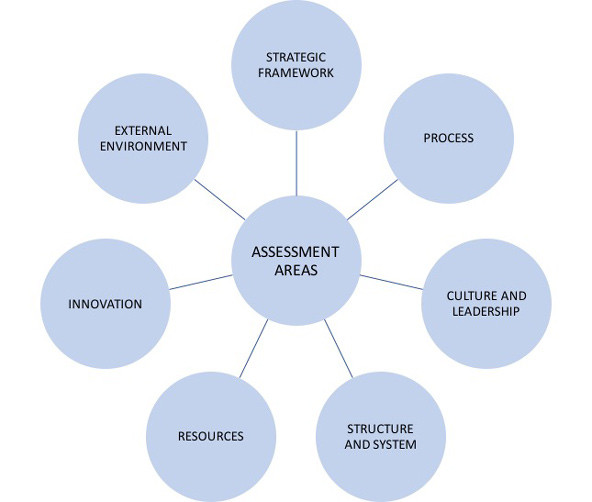
Over the years, many social sector leaders have written about the difficulties of measuring social impact. Over the past few decades, they’ve called for more skilled analysts, the embedding of impact measurement in the broader investment process, and the development of impact measurement roadmaps. Yet measurement remains a constant challenge for the sector.
For once, let’s take a step back instead of looking further forward.
Impact assessments are important tools for learning about effective solutions to social challenges, but do they really make sense when an organization is not fully leveraging its potential to address those challenges and deliver positive impact in the first place? Should well-done impact assessment remain the holy grail, or should we focus on organizations’ ability to deliver impact? We believe that before diving into measurement, organizations must establish awareness of and readiness for impact in every aspect of their operations. In other words, they need to assess their social impact capability system before they can even attempt to measure any impact they have generated. We call this the “capability approach to social impact,” and it rests on an evaluation of seven different organizational areas.
What Are Organizational Capabilities?
Are you enjoying this article? Read more like this, plus SSIR's full archive of content, when you subscribe.
The capability approach might ring a bell as an alternative approach to welfare economics that focuses on what individuals are capable of. Here, we use it to refer to the management science notion of capability, and thus to the concept of organizational capability.
In general terms, organizational capability combines people skills with an organization’s processes, systems, culture, and structures to deliver operational outcomes and create impact of any kind. Researchers Raphael Amit and Paul J. H. Schoemaker define organizational capability as “a firm’s capacity to deploy resources, usually in combination, using organizational processes, to effect a desired end.”
This definition has three important elements. First, organizational capability implies a connection between intention and outcome. An organization solves a specific problem to achieve a particular end result. Second, organizational capability is strongly based on resources—the allocation and utilization of a range of resources in a superior and distinctive way. To put it another way, capability “weaves together” otherwise separate organizational assets. Third, organizational capability is strongly linked to processes, usually complex ones such as service or product development, supply chain management, or customer-oriented processes.
Organizational capabilities tend to develop over time, reflecting organizational learning, and they are the “secret ingredient” of competitive advantage.
The Social Impact Capability Framework
When organizations do not have the right support system and resources in place to create positive social impact, it is unlikely that actual attempts at impact assessment will succeed. For example, measuring an organization’s impact on the local community will not bear much fruit if the organization’s strategy, mission, vision, processes, resources, and values are not designed to support local community involvement in the first place. It is better to focus on assessing impact readiness level—whether an organization is capable of delivering the impact it wishes to deliver—rather than jumping into the impact assessment itself.
 Examining these seven capability areas can help organizations determine their readiness for creating impact.
Examining these seven capability areas can help organizations determine their readiness for creating impact.
To help assess this, we created a diagnostic tool— based on extensive literature review and our advisory experience—that evaluates seven capability areas: strategic framework, process, culture and leadership, structure and system, resources, innovation, and the external environment. Organizations rate each area on a scale from one to five, with one being very low/not important and five being very high/essential. Ideally, representatives from all departments complete the assessment collectively to ensure that everyone is on the same page.
Here’s a basic overview of each area:
1. A strategic framework is a roadmap for moving an organization forward. It typically specifies the organization’s mission, vision, objectives, policies, and plans that guide its long- and short-term actions. The mission and long-term vision should ideally indicate a commitment to delivering positive social impact. It is even more important to turn these declarations into actual strategic planning and the setting of objectives.
2. Process describes standard interactions and typical activities within the organization’s main fields of action and among all hierarchy levels. An organization would ideally show a strong commitment to providing the tools and processes needed for all units to deliver positive social impact. Using an impact-oriented theory of change, or applying the “impact” criterion in core decision-making (such as staff allocation and project selection), for example, can go a long way toward improving impact readiness level. The most impact-minded organizations share their commitment to social impact delivery with their suppliers and clients, and they encourage everyone they are doing business with to be transparent about their own social impact.
3. Culture and leadership. Organizational culture is generally defined along the lines of “values and behaviors that contribute to the unique social and psychological environment of an organization.” Leadership plays a role in transforming organizational culture. Leaders set the overall drive, vision, and ambition of the organization, lead and manage processes and change, and set the decision-making framework. We’ve found that at organizations highly committed to social impact, leaders regularly remind staff of the positive effect they should continue to have on society.
4. Structure and system: Structure defines how an organization directs activities such as task allocation, coordination, and supervision toward the achievement of its aims. System refers how it organizes its functions and assigns responsibilities to its employees. Organizations scoring highly in this area believe that social impact is at the core of their operations and that it influences important business decisions. They typically articulate specific, impact-related responsibilities, and even formalize impact-focused roles with titles such as chief impact officer.
5. Resources. This includes all necessary resources an organization needs to perform its work, including human resources, material and technological resources, financial resources, and market image and credibility. Organizations highly committed to delivering social impact typically devote a substantial proportion of their resources to achieving social impact goals and targets, as well as to recording and capturing outputs regarding social impact.
6. Innovation. The ultimate goal of innovation should be positive change—to make something or someone better. Organizations committed to delivering social impact focus on advancing ideas that with the highest potential to positively affect society.
7. External environment: The environment in which an organization operates affects its operations, whether it is the retention of a skilled workforce or the procurement of office equipment. Thus, organizations need to understand their external environments (those of suppliers, clients, followers, media, policymakers, and so on) to proactively take advantage of impact-generation opportunities such as new collaborations, new market trends, or new laws. Organizations that care about serving society make efforts to find and work with the best-qualified and most like-minded supply network partners that have their own commitments to social impact. A good example would be a company that sources the ingredients for its products in a fair-trade way.
The Value of Assessing Capability
Just the process of measuring social impact capability can prove transformative for an organization. "If you can't measure it, you can't improve it"—a statement attributed to Peter Drucker—is widely accepted as true in business management. Similarly, “measure impact” has become quite a mantra for those creating social change.
Still, faced with the methodological difficulties of measuring impact, many organizations simply give up or stop at the output—versus outcome—level, and thus fail to measure any impact at all.
Measuring impact capability—a relatively simple, generalizable, and standardized process that is essentially the opposite of actual impact assessment—is a logical and necessary first step to effective impact delivery and measurement. Understanding the capabilities of an organization can lead to comparable results that identify areas generating low or no impact, and why. Having this information at hand can help leaders plan and execute steps toward the structural changes needed to achieve the social impacts they aim for.
Support SSIR’s coverage of cross-sector solutions to global challenges.
Help us further the reach of innovative ideas. Donate today.
Read more stories by Anita Fuzi, Dariusz Sikora & Lidia Gryszkiewicz.

